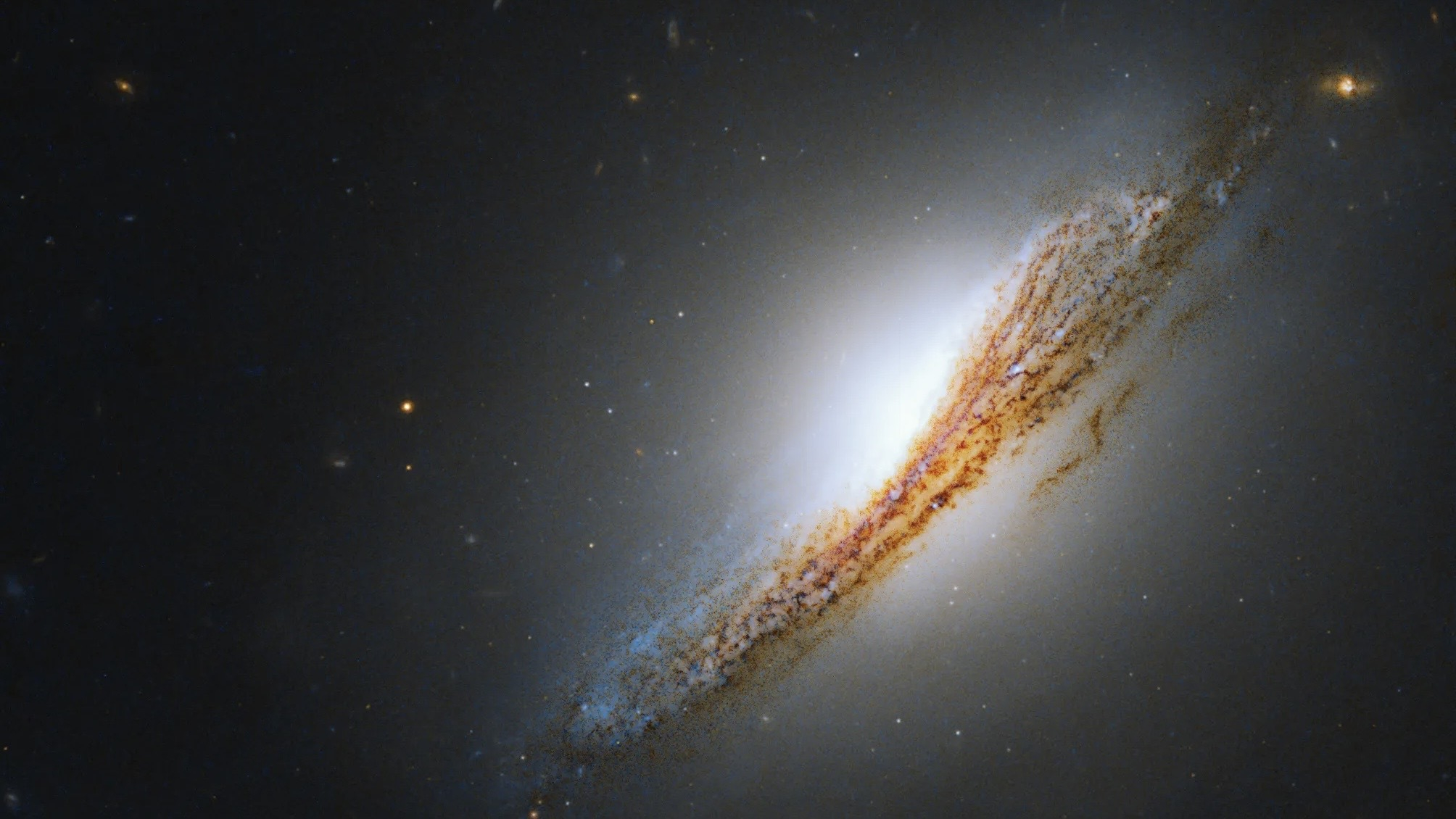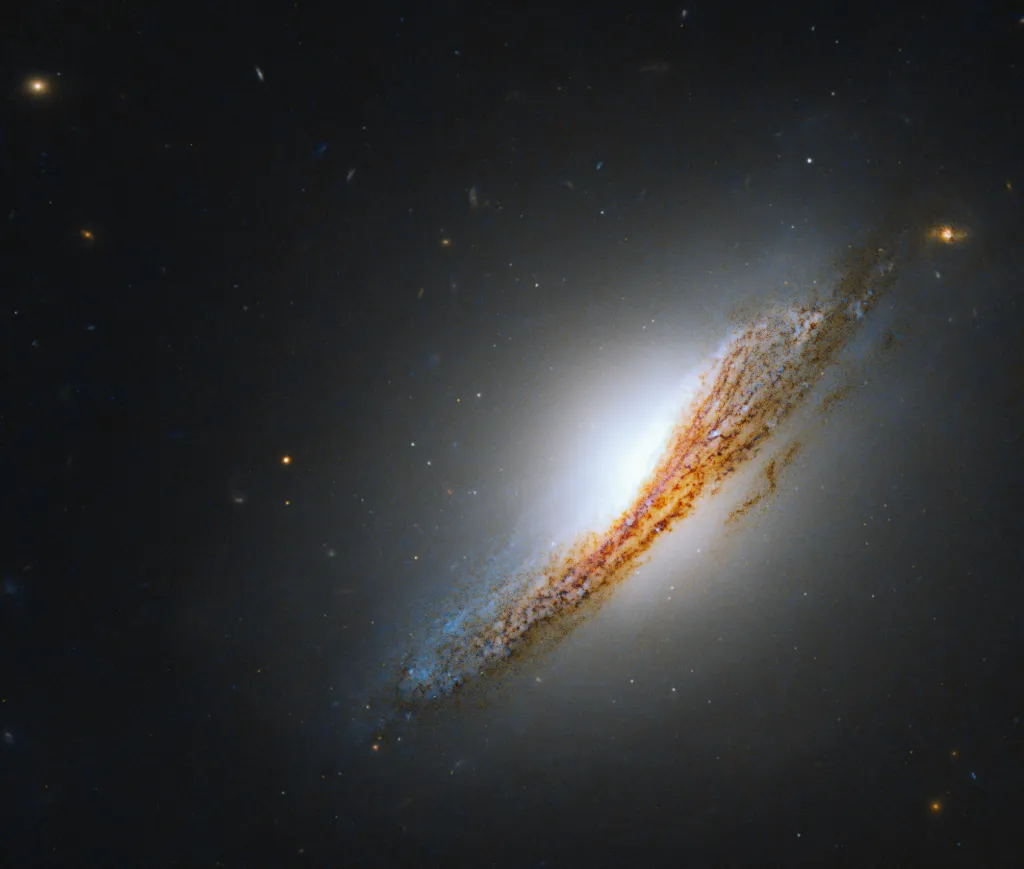Hubble Telescope reveals a rare galaxy with a luminous heart (photo)
NGC 612 is not as massive as the Milky Way, but it's impressive for several other reasons.

If you thought imagining the scale of our sun is stressful — it's 333,000 times more massive than the entire Earth — you'll be pleased to know the Hubble Space Telescope has reminded us of something even bigger. There's a galaxy out in space that's 1.1 trillion times more massive than our host star. It's named NGC 612, and we now have a new image of it.
Well, if it makes you feel any better, NGC 612 isn't as big as the Milky Way. The galaxy we live in is approximately 1.5 trillion times more massive than the sun. Or… maybe that didn't help.
According to a new release about the new NGC 612 visual, this galaxy falls under a few classifications that make it particularly interesting for us to observe. Most interestingly (in my opinion, at least), it's an active galaxy. In active galaxies, a supermassive black hole powers up the central region to create an incredibly energetic galactic heart. This heart, in turn, spews out jets of gas at nearly the speed of light. As a result of all that, the central spot also becomes so luminous that it outshines the combined light of every single star in the galaxy itself. Stunning.
Related: Chinese astronomers say their new space telescope will outdo Hubble
Though the Hubble Space Telescope's new view of NGC 612 is edge-on, meaning we're seeing it from a side angle, it's easy to infer the spectacle happening in the middle. Notably, there's also a so-called "central bulge" in that area as well. By contrast, orange and dark red zones in this image represent a plane of matter called the "galactic disk." That's where dust and cool hydrogen gas are located, and where star formation (albeit sparse) happens for NGC 612. Together, the bulge, disk and lack of spiral arms reveal this galaxy to be a lenticular galaxy — which is key for something we'll get to later.
The release also highlights how NGC 612 is a Seyfert galaxy, which means it emits large amounts of infrared radiation despite also being seen in visible light. Infrared wavelengths are a form of light that's invisible to human eyes. On the bright side, however, we have instruments that can pick up infrared signals to reveal those hidden sources, such as the James Webb Space Telescope and of course the Hubble Space Telescope, which is how this image was, in part, constructed.

"NGC 612 is a Type II Seyfert," the release further states, "which means matter near the center of the galaxy moves rather calmly around the nucleus. The stars in this galaxy are unusually young, with ages around 40 to 100 million years."
Get the Space.com Newsletter
Breaking space news, the latest updates on rocket launches, skywatching events and more!
Returning to that lenticular bit: This galaxy is a rare example of a non-elliptical galaxy that beams out radio emissions. Astronomers have only discovered five radio-emitting lenticular galaxies like this one to date. "One theory attributes NGC 612’s unusual radio emissions to a past interaction with a companion spiral galaxy," the release states. "Another theory focuses on the galaxy’s bright and dominant bulge, which is similar to those seen in elliptical radio galaxies."
Join our Space Forums to keep talking space on the latest missions, night sky and more! And if you have a news tip, correction or comment, let us know at: community@space.com.

Monisha Ravisetti is Space.com's Astronomy Editor. She covers black holes, star explosions, gravitational waves, exoplanet discoveries and other enigmas hidden across the fabric of space and time. Previously, she was a science writer at CNET, and before that, reported for The Academic Times. Prior to becoming a writer, she was an immunology researcher at Weill Cornell Medical Center in New York. She graduated from New York University in 2018 with a B.A. in philosophy, physics and chemistry. She spends too much time playing online chess. Her favorite planet is Earth.









